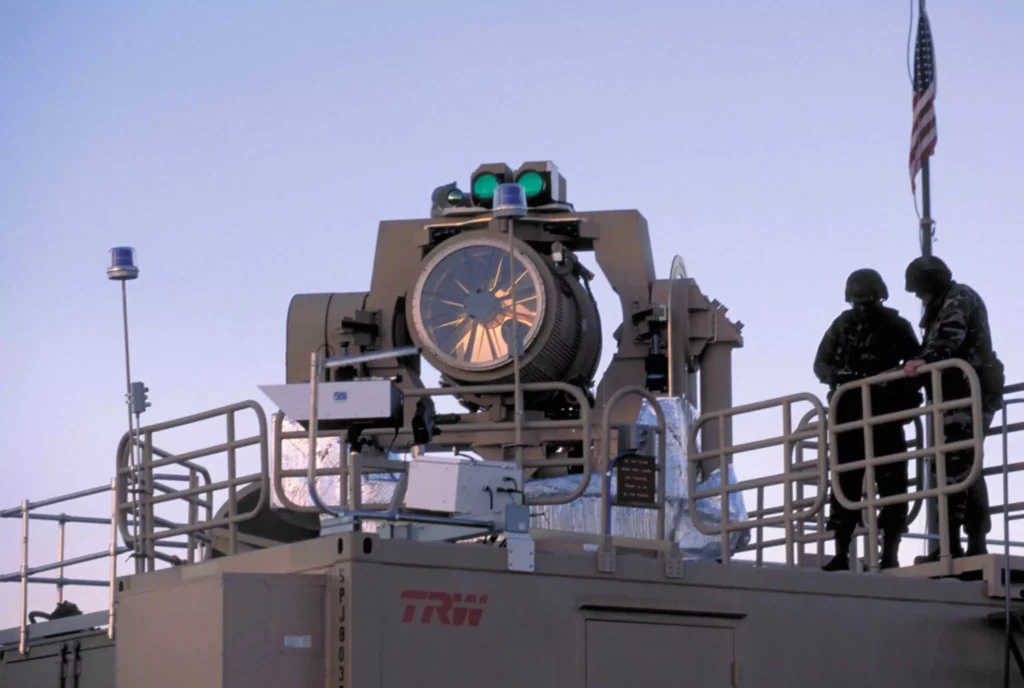Introduction
In a first-of-its-kind development, the UK has successfully tested a powerful laser weapon that can shoot down aircraft. The trial, which was carried out by the MoD, is a milestone in the development of military technology.
Let’s take a closer look at this innovative development.
Table of Contents
The DragonFire Laser Weapon: Precision and Cost-Effectiveness
The First Successful Test
The world’s first laser weapon, the DragonFire, made history last month when it fired on an unmanned aerial target (UAT) for the very first time during an on-site test at the Shetlands Range in Scotland.
This success opens up new options for air defense, providing a cost-effective alternative to conventional cruise missiles.
Precision and Range
DragonFire’s laser technology is so accurate, it can hit a pound coin from over a mile away.
While the exact range is still a secret, it works like a line of sight gun, meaning it can shoot at anything in sight.
Cost Efficiency
Unlike expensive missiles, the DragonFire system offers cost-effective operation.
It takes about the same amount of time to shoot the laser (10 seconds) as it takes an hour to heat a standard heater, and each shot costs less than £ 10.
The Science Behind Laser-Directed Energy Weapons (LDEWs)
How LDEWs Work
Light-emitting diodes (LEDs) are laser-guided energy weapons that use high-velocity bursts of light to destroy their targets.
These weapons attack with lightning speed, making them extremely useful against unmanned aerial vehicles (UAVs).
Development and Collaboration
DragonFire is the result of a £100m investment by the Ministry of Defence (MoD) and industry partners.
The development is led by the DSTl (Department of Science and Technology) in collaboration with industry experts.
Threats and Opportunities
The growing use of unmanned aerial vehicles (drones) in warfare calls for defense solutions to be developed.
During the conflict in Ukraine, Russia used Iranian-made Kamikaze unmanned aerial vehicles (UAVs) as a means of attack.
Laser weapons provide a potential solution that combines accuracy, affordability, and minimizing collateral damage.

Global Implications and Future Prospects
Global Adoption
While the success of the DragonFire laser in the UK is impressive, the U.S. Navy has already had several destroyers fitted with laser systems.
The shift to laser weapons is a reflection of the changing nature of modern warfare.
Challenges Ahead
Challenges remain, despite successful testing. In active conflicts, missiles remain the primary means of destroying drones.
But the DragonFire’s affordability and accuracy make it an attractive option.
A New Era in Air Defense
However, the cost and accuracy of the DragonFire make it an attractive option.
The DragonFire laser weapon is a significant advancement in the development of directed energy weapons
As the military and Royal Navy investigate how it can be integrated into their air defence systems, we may be looking at a sea change in military strategy.
Conclusion
The successful test of Britain’s DragonFire laser weapon heralds a new era in air defense. With precision, cost-effectiveness, and the ability to neutralize aerial threats, laser technology is poised to transform warfare. As nations grapple with evolving security challenges, the DragonFire system stands as a beacon of innovation and adaptability.
Also Read:
- Farewell, Chuck E. Cheese Animatronic Band
- Eurovision Dutch Entry May Not Perform In Grand Final As Police Investigate Incident
- A Rising Democrat Leans Into the Campus Fight Over Antisemitism
- Why Antiwar Protests Haven’t Flared Up at Black Colleges Like Morehouse
- UK Government Fires Warning Shot At Netflix As ‘Baby Reindeer’ Safeguarding Scandal Rages
Follow these social media links: